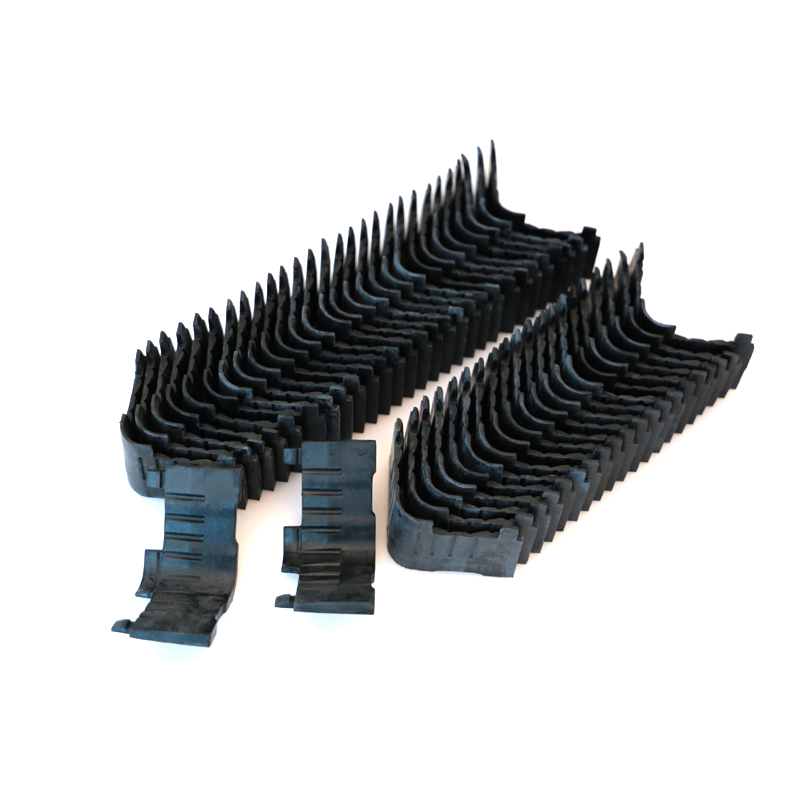News
- Industry news
Industry news
What are modified plastics?
What are modified plastics?
Modified plastics refer to plastics that are processed and modified on the basis of general plastics and engineering plastics through filling, blending, strengthening and other methods to improve the properties of flame retardant, strength, impact resistance, toughness and other aspects. Therefore, the trend of "replacing steel with plastic" appears in many industries.
Properties of modified plastics
1, improve the function of plastic products
To obtain high-performance new materials, in order to meet the needs of certain uses, such as weather resistance, flame retardant, antistatic, etc.
2, expand the application field of plastics, "plastic instead of steel, plastic instead of wood"
"Plastic instead of steel" has been used in many industries, such as automobiles. By modifying the plastic to achieve some steel strength properties, but also has a series of advantages such as light weight, rich color, easy to form.
3, price advantage, reduce the cost of plastic products
Due to the rising price of plastic raw materials and increasingly fierce competition, the plastic transformation property can reduce the cost of plastic products under the premise of ensuring that the performance is not reduced. So as to bring greater economic benefits to the production enterprises.
4, improve the technical content of plastic products, increase the added value
Through modification, the material can obtain two or more properties to improve, so that the material can be used for special purposes. Modified plastics is a plastic industry field involving a wide range, high science and technology content, can create huge economic benefits, is the inevitable way of the development of plastic industry, is the innovation point and power source of the sustainable development of new materials.
5. Morphology of reinforcement fibers
The mechanical strength of the composite increases with the increase of length-diameter ratio of the reinforced fiber.
6, good anti-fatigue performance
The strength and rigidity of reinforced plastics increase with the increase of fiber content, but the elongation decreases, so the creep resistance of reinforced plastics is obviously improved.
7, good thermal performance
8. High specific strength
Specific strength is the ratio of strength to density of a material. The specific strength of fiber-reinforced plastic materials even exceeds that of metals.

What are the techniques for modifying plastics?
1. Enhance technology
Fiber reinforcement is an important method for plastic modification. Both magnesium salt whisker and glass fiber can effectively improve the comprehensive properties of polypropylene.
2. Toughening technology
Mineral enhancement and toughening is one of the most common modification methods. Minerals added to polypropylene raw materials are usually calcium carbonate, talc powder, wollastonite, glass beads, mica powder, etc.
3. Fill and modify
A new type of highly packed glass fiber modified plastic can overcome the defects of conventional glass fiber reinforced thermoplastics.
4, blending and plastic alloy technology
Plastic blending modification refers to a modification method in which one or more other resins (including plastics and rubber) are incorporated into a resin to change the properties of the original resin.
5, flame retardant technology
6. Nanocomposite technology
7. Thermoplastic elastomer technology
8. Reactive graft modification
Copolymerization in which the main chain of a polymer composed of one or more monomers is joined by a certain way to the branch chain composed of another or more monomers.

Types of modified plastics
1. Enhanced modified plastics
By adding reinforcing agents, such as glass fiber, carbon fiber, graphite, etc., can improve the mechanical properties of plastics, such as strength, heat resistance, wear resistance, corrosion resistance, etc.
2. Fill modified plastic
By adding fillers, such as fibers, minerals, inorganic materials, etc., you can improve the performance of plastics, such as enhancing hardness, stiffness, heat resistance, fire resistance, etc.
3. Modified blends
Mixing two or more kinds of plastics together can improve and optimize compatibility, strength, heat resistance, electrical performance, etc.
4. Degrade modified plastics
By adding degradable materials, such as starch, polylactic acid, polyacrylic acid, etc., the degradable and environmental performance of plastics can be improved.
5. Flame-retardant modified plastics
By adding flame retardants, such as alkane bromide, magnesium oxide, alumina, etc., to improve its flame retardant performance, to achieve a certain flame retardant standard.
Application field of modified plastics
1. Automotive
Modified plastics can be used in automobile body, interior decoration, automobile hub and other parts, with the advantages of reducing vehicle weight, fuel saving, noise reduction and so on.
2. Electronic and electrical appliances
Modified plastics can be used in electronic parts, home appliance shell, insulation materials, battery shell, etc., with temperature resistance, chemical corrosion resistance, good insulation and so on.
3. Mechanical field
Modified plastics can be used to make bearings, gears, pipes and other mechanical parts, and are favored because of their light weight, high strength, corrosion resistance, insulation and other characteristics.
4. Construction
Modified plastics can be used to manufacture heat insulation, sound insulation, waterproof, anticorrosive materials, etc., because it has the characteristics of light weight, easy processing, water resistance, corrosion resistance, so it is also widely used in the field of construction.
Guangzhou?Best?Rubber?And?Plastic?Co.,Ltd.
 Tel:(020)31523725, 37523936, 31523097
Tel:(020)31523725, 37523936, 31523097 Fax:(020)37403270, 37403280
Fax:(020)37403270, 37403280 Email: sales@gz-best.com/export@gz-best.com
Email: sales@gz-best.com/export@gz-best.com Add:No. 21 Liangtian Middle Road, Baiyun District, Guangzhou City, Guangdong Province
Add:No. 21 Liangtian Middle Road, Baiyun District, Guangzhou City, Guangdong Province Add:25-27 Yanling Road, Guangzhou
Add:25-27 Yanling Road, Guangzhou


Follow WeChat
COPYRIGHT Guangzhou Best Rubber And Plastic Co.,Ltd. 粵ICP備05087523號
